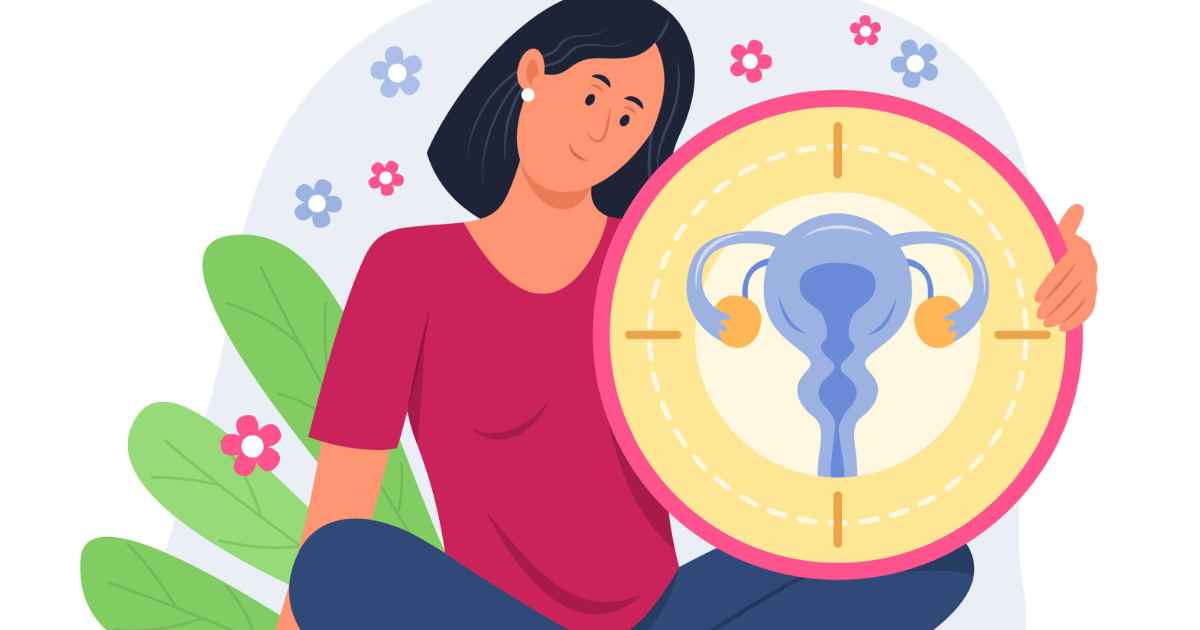Ovulation
Ovulation, the release of an egg from one of the ovaries, is a crucial event in the female reproductive cycle. It marks the window of fertility during which pregnancy can occur. Understanding ovulation and its timing is essential for couples planning to conceive and for those seeking to avoid unintended pregnancy.
In this article, we delve into ovulation, exploring its significance, timing, and various methods for tracking its occurrence. We also address common questions about ovulation, including its symptoms, duration, and impact on fertility.
The Menstrual Cycle and Ovulation
The menstrual cycle, the rhythmic series of changes in a woman’s reproductive system, typically lasts 28 days but can vary from 21 to 35 days. This cycle is orchestrated by hormones that regulate the development and release of an egg, as well as the preparation and shedding of the uterine lining.
The menstrual cycle is divided into four phases
- Menstruation (Days 1-5)- This phase marks the beginning of the cycle, characterized by the shedding of the endometrium, the lining of the uterus, through menstruation or bleeding.
- Follicular Phase (Days 6-14)- During this phase, follicles, tiny fluid-filled sacs in the ovaries, begin to develop. One of these follicles will become dominant, maturing and enclosing an egg. Estrogen from the maturing follicle stimulates the uterine lining for potential egg implantation.
- Ovulation (Day 14)- Around day 14, a surge in luteinizing hormone (LH) triggers the release of the mature egg from the dominant follicle. This event is known as ovulation.
- Luteal Phase (Days 15-28)- The empty follicle collapses and transforms into a structure called the corpus luteum, which produces progesterone, a hormone that maintains the thickened uterine lining. If fertilization occurs, progesterone supports the development of the pregnancy. If fertilization does not occur, the corpus luteum degenerates, progesterone levels decline, and the cycle starts anew with menstruation.

Timing of Ovulation
Average Timing of Ovulation
In a typical 28-day menstrual cycle, ovulation occurs around day 14, counting from the first day of menstruation. However, ovulation timing can vary significantly among women and even from cycle to cycle. Factors such as cycle length, stress, and medical conditions can influence ovulation timing.
Methods for Estimating Ovulation Timing
Accurately predicting ovulation can be challenging, but several methods can help estimate the fertile window, the time during which conception is most likely.
1. The Calendar Method
The calendar method involves tracking the menstrual cycle’s length and assuming ovulation occurs 14 days before the expected next period. This method needs to be more accurate for women with irregular cycles.
2. Ovulation Kits
Ovulation kits, widely available in pharmacies, detect a surge in luteinizing hormone (LH) in urine, indicating ovulation is imminent. These kits provide a more accurate indication of ovulation timing.
3. Monitoring Cervical Mucus
Cervical mucus, the fluid produced by the cervix, changes consistency during the menstrual cycle. Around ovulation, cervical mucus becomes clear, stretchy, and resembles egg white, an optimal environment for sperm transport.
4. Tracking Basal Body Temperature (BBT)
Basal body temperature (BBT) is the lowest body temperature recorded after sleep. During the follicular phase, BBT remains low but rises slightly after ovulation due to increased progesterone production. Tracking BBT can help identify ovulation timing.
Combination of Methods
Combining these methods can provide a more reliable estimate of ovulation timing, increasing the chances of conception for couples planning to conceive or for those seeking to avoid unintended pregnancy.
It is important to note that these methods are not foolproof, and individual variations can affect their accuracy. Consult a healthcare professional for personalized advice on ovulation tracking and fertility planning.

Symptoms of Ovulation
Here is a list of common symptoms that may indicate ovulation
Mid-cycle abdominal pain (mittelschmerz)
Mittelschmerz is a mild to moderate pain or discomfort in the lower abdomen that some women experience around ovulation. It typically occurs on one side of the stomach, corresponding to the ovary that released the egg. Mittelschmerz is usually brief, lasting for a few hours or less.
Changes in cervical mucus
Cervical mucus, the fluid produced by the cervix, changes consistency and texture throughout the menstrual cycle. Around ovulation, cervical mucus becomes stretchy and resembles a raw egg white. This consistency allows sperm to easily travel through the cervix and reach the egg for fertilization.
Slight increase in basal body temperature (BBT)
Basal body temperature (BBT) is the lowest body temperature recorded after sleep. During the follicular phase, BBT remains low but rises slightly after ovulation due to increased progesterone production. Tracking BBT can help identify ovulation timing. However, it is essential to note that other factors, such as sleep disturbances or illness, can influence BBT fluctuations.
Other potential symptoms of ovulation
- Breast tenderness or swelling
- Increased libido
- Bloating
- Mood swings
- Heightened sense of smell
It is important to emphasize that the absence of these symptoms does not necessarily mean ovulation is not occurring. Not all women experience noticeable symptoms during ovulation, and the intensity of symptoms can vary from person to person.
Ovulation and Fertility
Here is a discussion of the impact of irregular ovulation on fertility and how identifying ovulation can help couples plan intercourse to increase their chances of conception
Impact of Irregular Ovulation on Fertility
Regular ovulation is essential for fertility. When ovulation occurs regularly, the egg is released predictably, providing a window of opportunity for fertilization. However, irregular ovulation, characterized by unpredictable or absent ovulation, can significantly impact fertility.
Causes of Irregular Ovulation
Several factors can contribute to irregular ovulation, including
- Polycystic ovary syndrome (PCOS): PCOS, a common hormonal disorder, is a common cause of irregular ovulation.
- Stress: Excessive stress can disrupt hormonal balance, leading to irregular ovulation.
- Weight fluctuations: Weight gain or loss can affect hormone levels and ovulation patterns.
- Certain medications: Some medications, such as birth control pills or certain antidepressants, can suppress ovulation.
- Medical conditions: Underlying medical conditions, such as thyroid disorders or pituitary gland abnormalities, can interfere with regular ovulation.
Identifying Ovulation for Fertility Planning
Accurately identifying ovulation is essential to enhance fertility planning, which enables couples to have intercourse during the fertile window when conception is most likely. There are various methods available to track ovulation and identify the fertile window.
- Ovulation kits: These kits detect a surge in luteinizing hormone (LH), indicating ovulation is imminent.
- Monitoring cervical mucus: Cervical mucus changes consistency during the menstrual cycle, becoming clear, stretchy, and egg-white-like around ovulation.
- Tracking basal body temperature (BBT): BBT rises slightly after ovulation due to increased progesterone production. Tracking BBT can help identify ovulation timing.
- Calendar method: This method involves tracking the menstrual cycle’s length and assuming ovulation occurs 14 days before the expected next period. This method needs to be more accurate for women with irregular cycles.